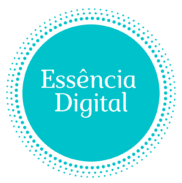In the crowded, fast-scrolling world of the digital economy, you have less than three seconds to make a first impression. Before a customer reads your mission statement, understands your product’s features, or appreciates your unique value proposition, they will make a snap judgment based on one simple thing: what they see.
A brand’s visual identity is its silent ambassador. It’s the powerful, unspoken language that communicates your personality, your professionalism, and your promise to the customer. In a marketplace where consumers are bombarded with options, a strong visual identity is not just artistic “decoration”; it is a fundamental business asset that builds trust, creates recognition, and drives growth.
This guide explores the essential components of a modern visual identity and explains why investing in one is no longer optional for any brand serious about succeeding online.
The Anatomy of a Modern Visual Identity: More Than Just a Logo
When many people hear “visual identity,” they think of a logo. While a logo is the cornerstone, a truly effective identity is a cohesive and comprehensive ecosystem of visual elements that work together to tell a consistent brand story across every touchpoint.
A modern visual identity includes:
- Logo System: This isn’t just a single logo, but a versatile suite of variations—a primary logo, a secondary logo, a logomark (icon), and a wordmark—that can be adapted for any context, from a tiny favicon to a large billboard.
- Color Palette: A strategic selection of primary, secondary, and accent colors. Color is a powerful psychological tool that evokes emotion and sets the mood for your brand.
- Typography Suite: A curated set of fonts for headlines, subheadings, and body text. Typography is the voice of your brand; it can be bold and authoritative, elegant and refined, or friendly and approachable.
- Imagery and Iconography: A consistent style for all visual assets, including photography, illustrations, and icons. This ensures that every image and icon feels like it belongs to the same brand family.
- Motion and Animation: In the digital world, how things move is part of the brand. This includes UI animations, loading icons, and video graphics that reinforce the brand’s personality.
When all these elements are aligned, they create a powerful, immersive brand experience.
The First Impression is the Only Impression: Visuals as a Trust Signal
In the digital-first world, your website, social media profile, or app is your storefront. Unlike a physical store, you don’t have a friendly salesperson to greet customers. Your visual design does that job for you.
A polished, professional, and consistent visual identity creates a powerful “halo effect”—a cognitive bias where a positive impression in one area (like beautiful design) causes us to view the entire brand more favorably. It subconsciously signals to the user that:
- This company is professional and pays attention to detail.
- This product is high-quality and trustworthy.
- This brand is stable and here to stay.
Conversely, a disjointed, dated, or unprofessional design can create immediate distrust, no matter how excellent your actual product or service may be.
Beyond Aesthetics: Designing for Emotional Connection
Your visual identity is a shortcut to your brand’s personality. It allows you to communicate your core values and evoke specific feelings without saying a word.
Consider how different design choices create emotional resonance:
- A meditation app like Headspace uses soft, rounded illustrations and a pastel color palette to evoke feelings of calm, friendliness, and accessibility.
- A high-end fintech app might use a dark-mode interface, sharp typography, and a single bold accent color to communicate security, precision, and modernity.
- An eco-friendly e-commerce brand may use earthy tones, natural textures, and a serif font to create a sense of being organic, grounded, and trustworthy.
This emotional connection is what fosters brand loyalty and turns casual users into passionate advocates.
Cutting Through the Noise: Visual Identity as a Competitive Advantage
The digital marketplace is saturated. For every SaaS product, e-commerce store, or creative agency, there are dozens, if not hundreds, of competitors. In this sea of sameness, a distinctive visual identity is how you get remembered.
Think of iconic digital brands like Spotify or Airbnb. Their visual identities are instantly recognizable, not just because of their logos, but because of a cohesive system. Spotify’s iconic green, their unique “Duotone” image style, and their custom Circular font all work together. This system is so strong that you can recognize a Spotify ad even before you see the logo. This immediate recognition is an invaluable competitive advantage.
The Functional Powerhouse: How Visual Identity Drives Marketing and UX
A strong visual identity is not just a branding exercise; it is a functional powerhouse that improves performance across your business.
In Marketing
A consistent visual identity creates brand recall and a seamless customer journey. When a user sees an ad on social media, then clicks through to a landing page, and then receives a welcome email, the consistent visuals create a sense of familiarity and trust, which directly increases conversion rates.
In UX/UI Design
Your visual identity is the foundation of your design system. Consistent button styles, form fields, iconography, and typographic hierarchy don’t just make a product look good; they make it significantly easier to learn and use. This reduces user frustration, improves usability, and increases customer retention.
Conclusion: Your Brand’s Visual Blueprint
In the fast-paced digital economy, your visual identity is not the final coat of paint; it is the architectural blueprint for how your brand is perceived. It is the tangible, visible expression of your strategy, your personality, and your promise to your customers.
Brands that invest in a clear, consistent, and compelling visual identity are not just building a better-looking business—they are building a more resilient, memorable, and valuable one. It’s how you ensure that, in those first three crucial seconds, your first impression is a lasting one.

